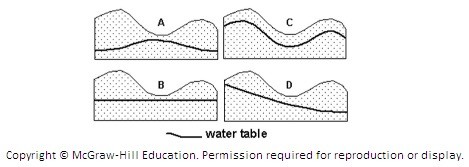Briefly compare and contrast midlatitude cyclones, hurricanes, and tornadoes. How are thunderstorms related to each?
What will be an ideal response?
The majority of cyclones are not hurricanes or tornadoes; however, hurricanes and tornadoes are cyclones. Cyclone refers to the circulation around a low-pressure center. Midlatitude cyclones have broad diameters—1600 kilometers or more—whereas hurricanes average 600 kilometers across and tornadoes have a miniscule quarter kilometer diameter. Hurricanes and tornadoes are clearly much smaller, but they are also much more violent than midlatitude cyclones. Thunderstorms are related to all three of these events. First, they are frequently spawned along the cold front of a midlatitude cyclone. On rare occasions, a tornado may descend from the thunderstorm's cumulonimbus tower, and hurricanes also generate widespread thunderstorm activity.
You might also like to view...
The air temperature is 40°F. The wind is blowing 20 miles per hour. Which of the following temperatures might be the effective temperature to your body under these conditions (assuming your are not wearing clothes)?
A) -40°F B) 40°F C) 30°F D) This question cannot be answered with the information given.
Minerals that possess ____________________ break, or split, along smooth planes of weakness determined by the strength of their chemical bonds. In contrast, a(n) ____________________ is mineral breakage along irregular surfaces
Fill in the blank(s) with correct word
Of the following clouds, which is typically found at the lowest elevation?
A) cirrocumulus B) altocumulus C) cirrus D) altostratus E) stratocumulus
The four schematic cross sections below show the potential groundwater resources for an area of hills and valleys. Assume the region is underlain by an open aquifer composed of sand and gravel and receives plentiful rainfall. Which diagram is the best representation of the relationship between topography and water table?
A. Diagram A B. Diagram B C. Diagram C D. Diagram D